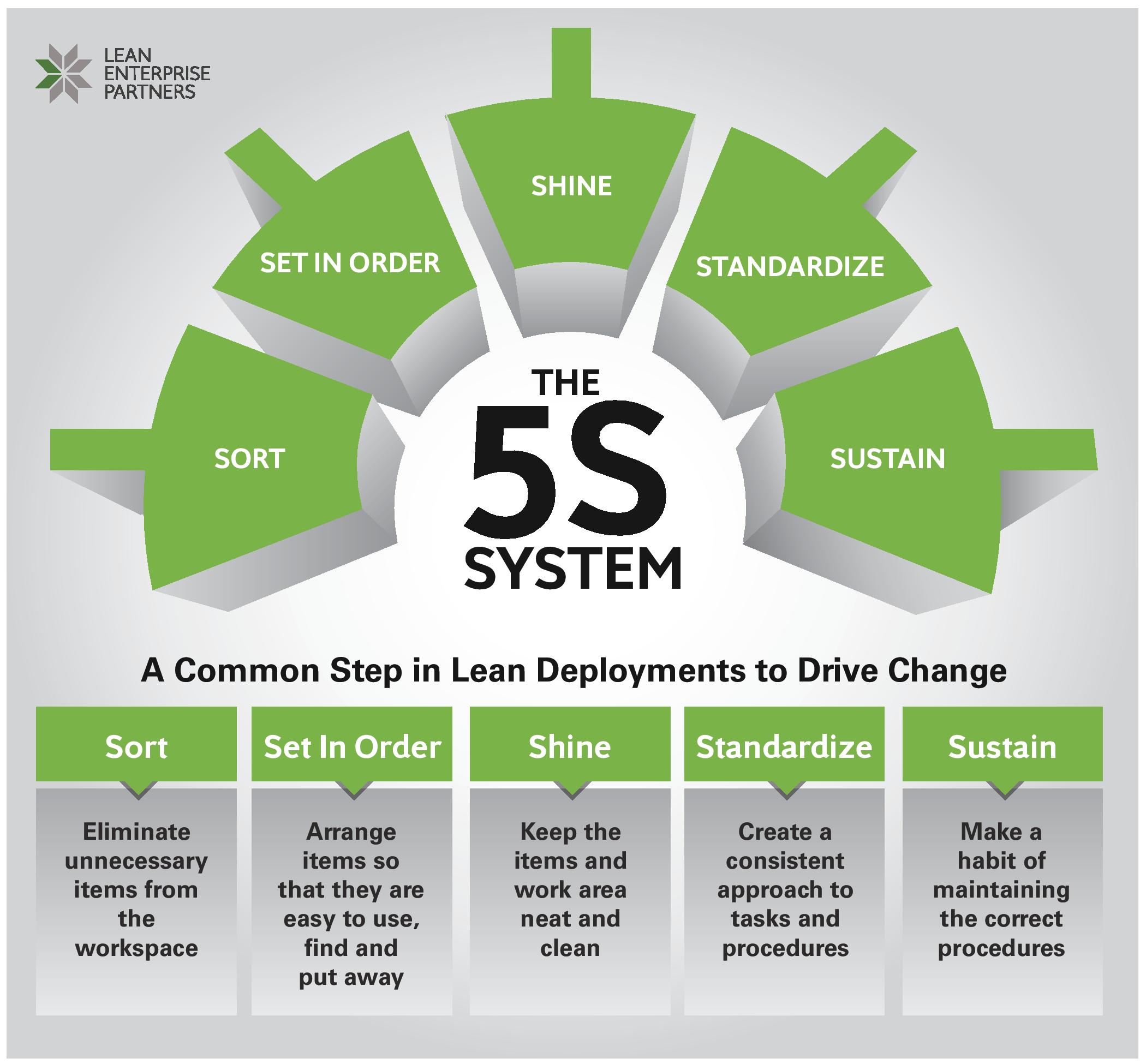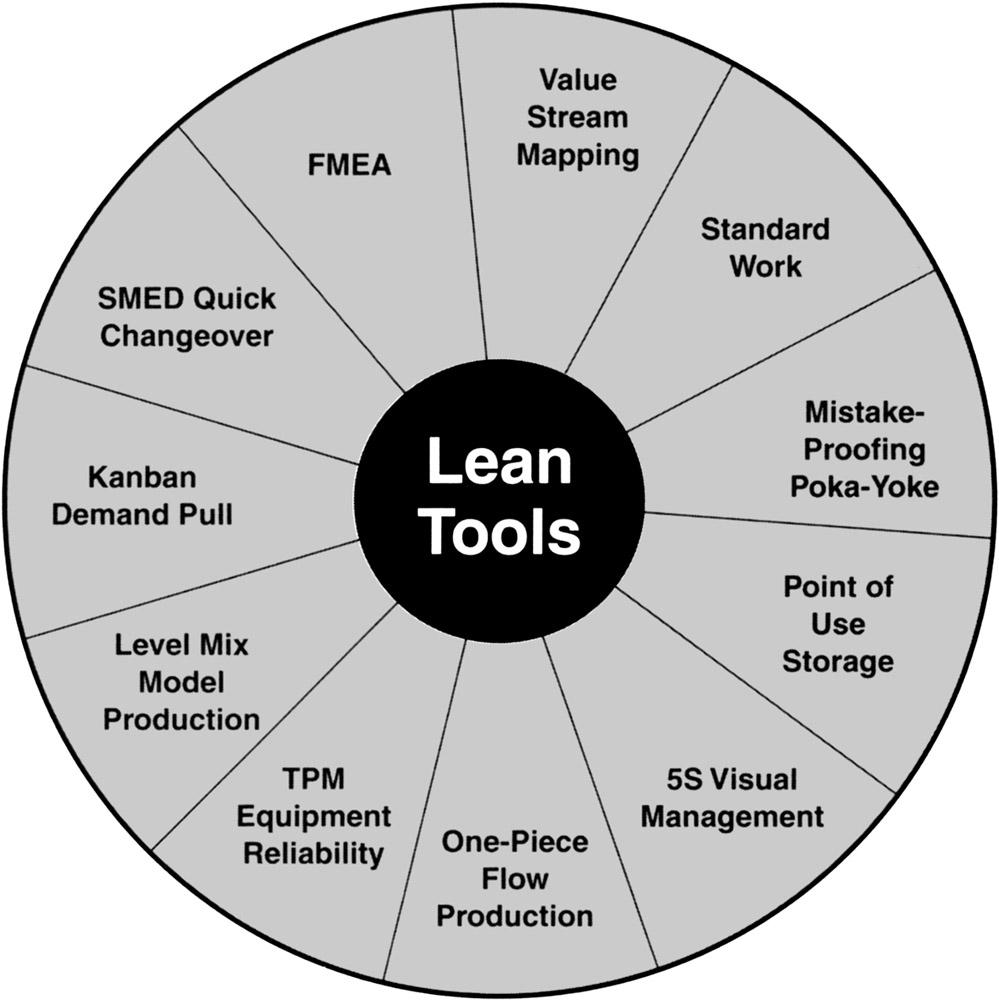Lean manufacturing or lean production, often simply "lean", is a systematic method for waste minimization ("Muda") within a manufacturing system without sacrificing productivity, which can cause problems.
5S is a workplace organization method that uses a list of five Japanese words: seiri, seiton, seisĹŤ, seiketsu, and shitsuke. These have been translated as "Sort", "Set In order", "Shine", "Standardize" and "Sustain". The list describes how to organize a work space for efficiency and effectiveness by identifying and storing the items used, maintaining the area and items, and sustaining the new order. The decision-making process usually comes from a dialogue about standardization, which builds understanding among employees of how they should do the work. Safety is also main aspects.
Kanban (signboard or billboard in Japanese) is a scheduling system for lean manufacturing and just-in-time manufacturing (JIT).
Kanban is Japanese for “visual signal” or “card.” Toyota line-workers used a Kanban (i.e., an actual card) to signal steps in their manufacturing process. The system’s highly visual nature allowed teams to communicate more easily on what work needed to be done and when. It also standardized cues and refined processes, which helped to reduce waste and maximize value.
Poka-yoke is a Japanese term that means "mistake-proofing" or "inadvertent error prevention". A poka-yoke is any mechanism in any process that helps an equipment operator (yokeru) avoid mistakes (poka). Its purpose is to eliminate product defects by preventing, correcting, or drawing attention to human errors as they occur.
TPM (Total Productive Maintenance) is a holistic approach to equipment maintenance that strives to achieve perfect production: No Breakdowns No Small Stops or Slow Running No Defects In addition it values a safe working environment: No Accidents
TPM emphasizes proactive and preventative maintenance to maximize the operational efficiency of equipment. It blurs the distinction between the roles of production and maintenance by placing a strong emphasis on empowering operators to help maintain their equipment.
In a lean manufacturing environment, standardized work is a key element to success. By repeating a set method, the process is more organized and improvement opportunities become more apparent. The process should be centered around human motion; ensure the repeatable process is ergonomically correct. The four main elements of standardized work are takt time, line balancing, work sequence and standard in-process stock.
standardized work consists of three elements: Takt time, which is the rate at which products must be made in a process to meet customer demand. Line balancing is the next step in standardized work. This will involve time studies of all the different jobs within the process. The concept is that all jobs within an area or line will require the same amount of time to complete (cycle time). The precise work sequence in which an operator performs tasks within takt time. The standard inventory, including units in machines, required to keep the process operating smoothly.p>



